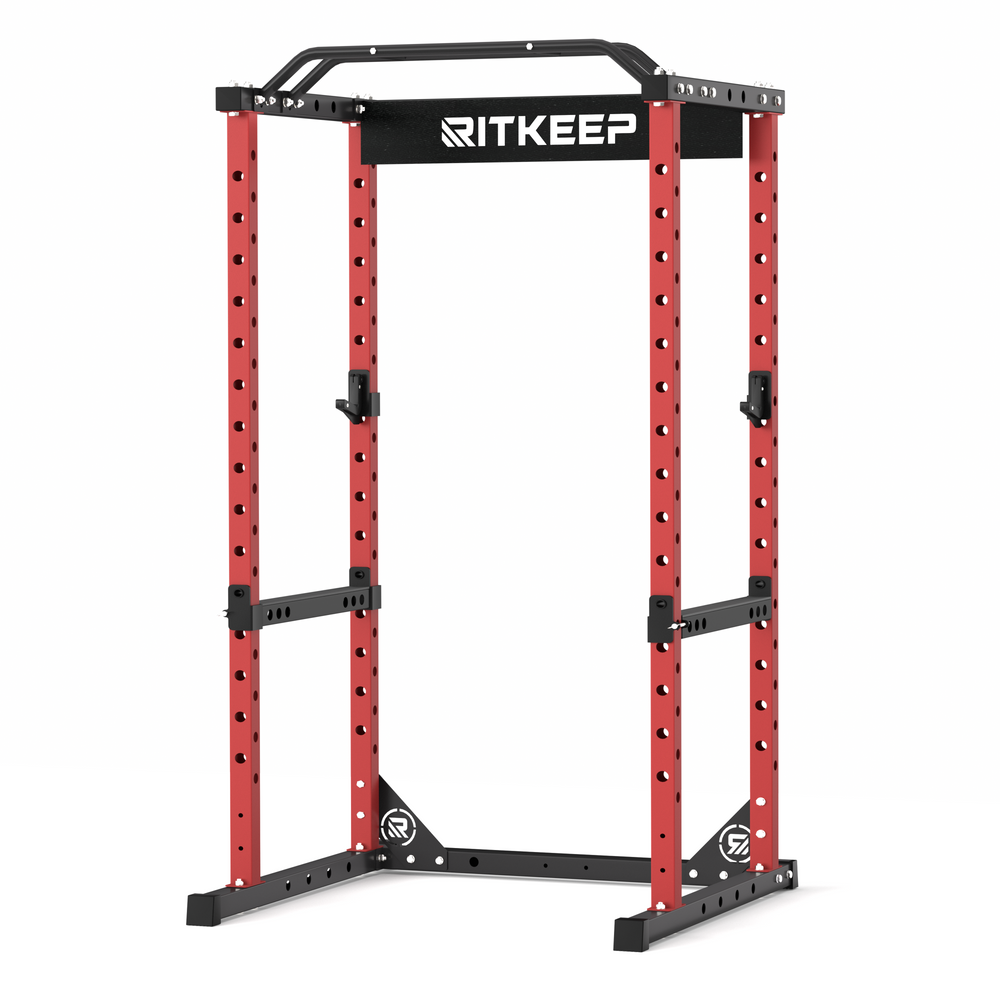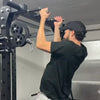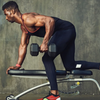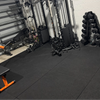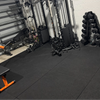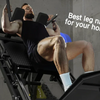Essential Guide to Buying Weight Plates: Materials, Sizes, and More
If you're new to working out, weight plates are those hefty, flat discs you see on the ends of barbells. Weight plates are essential components of strength training equipment, used to add resistance to exercises and enhance muscle development.
But here’s a tip: you don’t need a barbell to use them. Weight plates can be used alone for various full-body and isolation moves, making them super versatile for your workouts.This comprehensive guide will explore the materials, sizes, types, and benefits of weight plates, helping you make informed decisions when purchasing them.
What is a Weight Plate?
A weight plate is a flat, heavy object, typically made of rubber, iron or other durable materials, designed to be added to barbells, dumbbells, or weight machines to increase the resistance during workouts. They come in various sizes and weights, allowing users to customize their training intensity.
Sizes of Weight Plates
Weight plates are essential components in strength training, available in a variety of sizes to accommodate different workout needs. These plates are typically measured in either pounds or kilograms, offering flexibility in weight increments.
Here’s a breakdown of common weight plate sizes:
- 2.5 lbs (1.1 kg): Ideal for small, precise weight increases, often used for fine-tuning strength gains or progressing in small steps.
- 5 lbs (2.3 kg): A moderate step up, frequently added for gradual increases in workout intensity without overloading muscles.
- 10 lbs (4.5 kg): A popular choice for incremental progression in lifts, balancing challenge and control.
- 25 lbs (11.3 kg): Typically used for more substantial increases in resistance, suitable for those with a solid strength foundation.
- 35 lbs (15.9 kg): Less common but useful for specific training goals, particularly in powerlifting or advanced strength training.
- 45 lbs (20.4 kg): Standard for most heavy lifts, such as squats, deadlifts, and bench presses, providing a significant challenge for strength development.
- 55 lbs (25 kg): Ideal for advanced heavy lifts and high-intensity training, offering a greater challenge for pushing your strength limits and enhancing muscle growth.
These various sizes allow athletes to progressively increase their workout intensity, tailoring resistance to match their specific strength levels and training objectives. Whether you're gradually building strength or pushing for new personal records, weight plates offer the versatility needed to customize your workouts effectively.
What Are Weight Plates Made Of?
Weight plates are made from various materials, each offering unique characteristics:
Cast Iron: Cast iron plates are durable and budget-friendly, making them a staple in home gyms. They provide a classic feel and are great for traditional strength training.
Rubber-Coated: Rubber-coated plates have a protective layer that minimizes noise and protects floors. They're ideal for gyms where reducing impact is important.
Bumper Plates: Bumper plates are made of dense rubber and are designed for Olympic lifting. They can be safely dropped without damaging the floor, making them essential for high-intensity workouts.
Urethane: Urethane plates are high-quality and extremely durable, resistant to wear and tear. They offer precision and longevity, perfect for serious lifters.
Types of Weight Plates
There are several types of weight plates, each serving different purposes:
Standard Plates: Designed for standard bars with a 1-inch diameter hole.
Olympic Plates: Fit Olympic bars with a 2-inch diameter hole, commonly used in professional settings.
Fractional Plates: Small increments, usually less than 2.5 lbs, for precise weight adjustments.
Benefits of Using Weight Plates
Versatility:Weight plates can be used with barbells, dumbbells, or on their own, allowing for a wide range of exercises that target different muscle groups.
Progressive Overload:They enable you to gradually increase resistance by adding more weight, helping to build strength and muscle over time.
Customizable Workouts:With various weights available, weight plates allow for tailored workouts to match your fitness level and goals, whether you're focusing on endurance, strength, or hypertrophy.
Weight Plates vs. Other Training Equipment
Weight Plates vs Iron Plates
| Feature | Weight Plates | Iron Plates |
| Material | Various (Cast Iron, Rubber-Coated, Urethane) | Cast Iron |
| Durability | High (depending on material) | Prone to rust and wear |
| Noise&Floor Protection | Low (depends on coating) | High noise and potential floor damage |
| Suitability | Versatile for different lifting styles | Standard weightlifting |
| Cost | Varies (often higher for advanced types) | Generally more affordable |
Weight Plates vs Dumbbells
| Feature | Weight Plates | Dumbbells |
| Primary Use | Added to barbells or weight machines | Standalone for various exercises |
| Adjustability | Adjustable with different sizes and types | Fixed or adjustable models available |
| Space efficiency | Requires a barbell or machine for use | Compact and can be used independently |
| Versatility | Used for a variety of exercises and machines | Suitable for a wide range of exercises |
| Cost | Generally lower per unit, depends on material | Can be more expensive, especially adjustable types |
Effective Workouts Using Weight Plates
Weight plates can be incredibly versatile tools for effective workouts. Here are a few exercises you can incorporate into your routine:
1.Squats
- How to: Hold weight plates close to your chest or rest them on your shoulders. Perform a squat by bending your knees and lowering your hips, then push back up to the starting position.
- Benefits: Targets the quads, hamstrings, and glutes, enhancing lower body strength and stability.
2.Deadlifts
- How to: Place weight plates on the floor, stand with feet shoulder-width apart, and grip the barbell or weight plate with both hands. Lift the weight by straightening your legs and hips, then lower it back down.
- Benefits: Strengthens the posterior chain, including the hamstrings, glutes, and lower back.
3.Overhead Press
- How to: Hold a weight plate at shoulder height, press it upward until your arms are fully extended, then lower it back down to the starting position.
- Benefits: Builds shoulder strength and improves upper body stability.
4.Lunges
- How to: Hold weight plates at your sides or on your shoulders. Step forward with one leg and lower your hips until both knees are bent at 90 degrees. Push back to the starting position and alternate legs.
- Benefits: Enhances leg strength and balance while targeting the quads, hamstrings, and glutes.
5.Russian Twists
- How to: Sit on the floor with your knees bent and feet lifted. Hold a weight plate with both hands, lean back slightly, and twist your torso from side to side.
- Benefits: Engages the core muscles, improving abdominal strength and rotational stability.
Cost Considerations for Weight Plates
When considering the cost of weight plates, focus on material quality, size, and brand. High-quality materials like urethane or bumper plates tend to be more expensive but offer better durability and noise reduction. Larger and heavier plates increase the overall cost, so starting with essential sizes and expanding as needed can help manage expenses. Additionally, well-known brands often cost more, so comparing options and reading reviews can ensure you get good value for your investment.
What to Consider When Buying Weight Plates
When purchasing weight plates, consider the following factors:
Material: When buying weight plates, consider the material to ensure durability and noise control. Cast iron plates are cost-effective but can be noisy, while rubber-coated or bumper plates reduce noise and protect floors but come at a higher price.
Size and Weight: Evaluate the size and weight options available to match your training needs. Starting with a few essential sizes and gradually expanding can help manage costs and make workouts more versatile.
Budget: When considering your budget, it’s important to balance quality and cost to get the best value.
Choosing the Right Type of Weight Plate
When choosing the right type of weight plate, consider the material for durability and suitability—cast iron is cost-effective, while rubber-coated and bumper plates provide noise reduction and floor protection. Ensure compatibility with your equipment by matching the plate’s hole size with your barbell or weight machine, and select plates that align with your workout goals, such as bumper plates for Olympic lifting or standard plates for general strength training.
Maintenance and Care of Weight Plates
Proper maintenance extends the lifespan of weight plates. Regularly clean them to prevent rust and store them in a dry, safe place. Rubber-coated plates may require additional care to maintain their protective layer.
Conclusion
In summary, weight plates are crucial for effective strength training and offer various options to suit different fitness needs. When selecting the right plates, consider the material, cost, and type to ensure you get the best value for your workouts.
RitKeep provides top-notch fitness equipment designed to support your journey towards a healthier, more active lifestyle. Embracing quality equipment from RitKeep can help you stay committed to your fitness goals and lead a more balanced, health-focused life.
Frequently Asked Questions (FAQ)
Why are weight plates so expensive?
Weight plates can be pricey due to factors like material quality, manufacturing processes, and shipping costs. Higher quality plates, made from durable materials like cast iron or steel, often come at a premium but offer better longevity and performance.
What type of weight plate is best?
The best type of weight plate depends on your goals and budget. Standard iron or steel plates are great for durability and cost-effectiveness, while bumper plates are ideal for Olympic lifting and noise reduction, offering a more versatile option for a home gym.
Where to buy lifting weights?
You can buy weight plates online at RitKeep's official site and our Amazon flagship store. Enjoy free shipping for convenient delivery right to your door.
How many weight plates do I need?
The number of weight plates you need depends on your workout goals and the exercises you perform. For most users, having a set of various weights—such as pairs of 5 lb, 10 lb, 25 lb, and 45 lb plates—covers basic needs and allows for progression. Beginners might start with this range, while more advanced lifters may require additional plates to support heavier lifts and more diverse workouts. Consider your space and future goals to determine the optimal amount.
Is it a better deal to buy a weight plate set?
Buying a weight plate set is often more cost-effective than purchasing individual plates. Sets typically offer a range of weights at a lower price per plate. RitKeep's colored bumper weight plates set is a perfect choice, distinctive colors and comfortable texture make your fitness experience even better.
Best Home Gym Gear in RitKeep
These are our most popular home gym machines — combining Smith Machine and Power Rack in one. Perfect for both guided and free weight training to support your everyday fitness goals.
PMAX 5600 All-In-One Smith Machine - Integrated Weight System
✔️ 6 IN 1 Gym Station
✔️ With 320 LB Weight Stack On Each Side
✔️ Feel the Burn Through 80+ Exercises
PMAX 4750 Dual Plate Loaded Multi Functional Smith Machine
✔️ Fuel Your Workout with 100+ Exercises
✔️ Dual Independent Pulley System
✔️ Removable Jammer Arms & Leg Extension
Destroyer M10 ALL-IN-ONE Home Gym Power Rack With Pulley System
✔️ Crossover Cable Pulley System
✔️ Heavy-Duty Multi-Functional Rack
✔️ Offering over 80+ exercises







